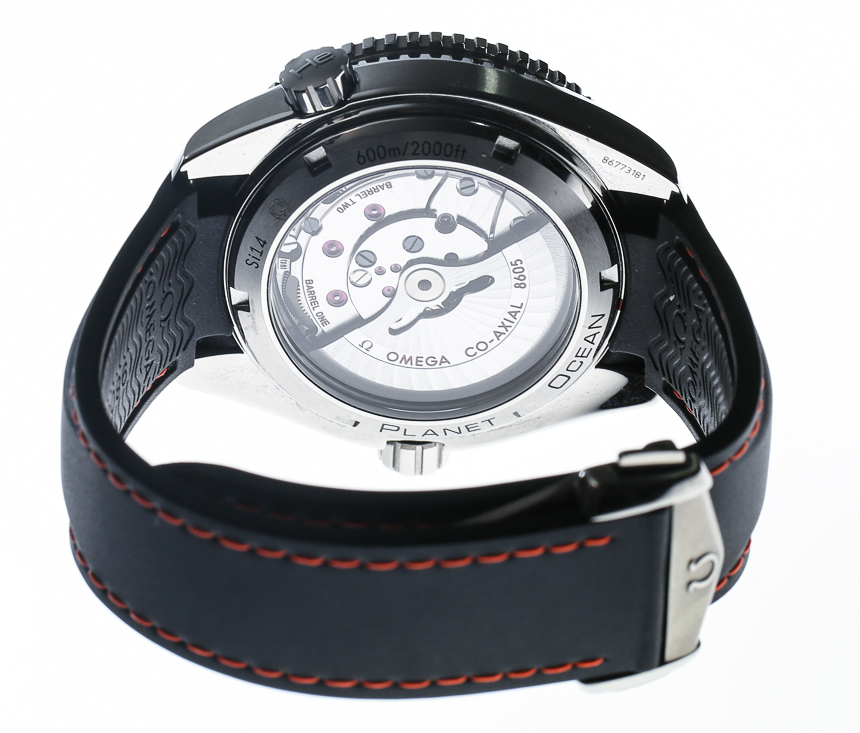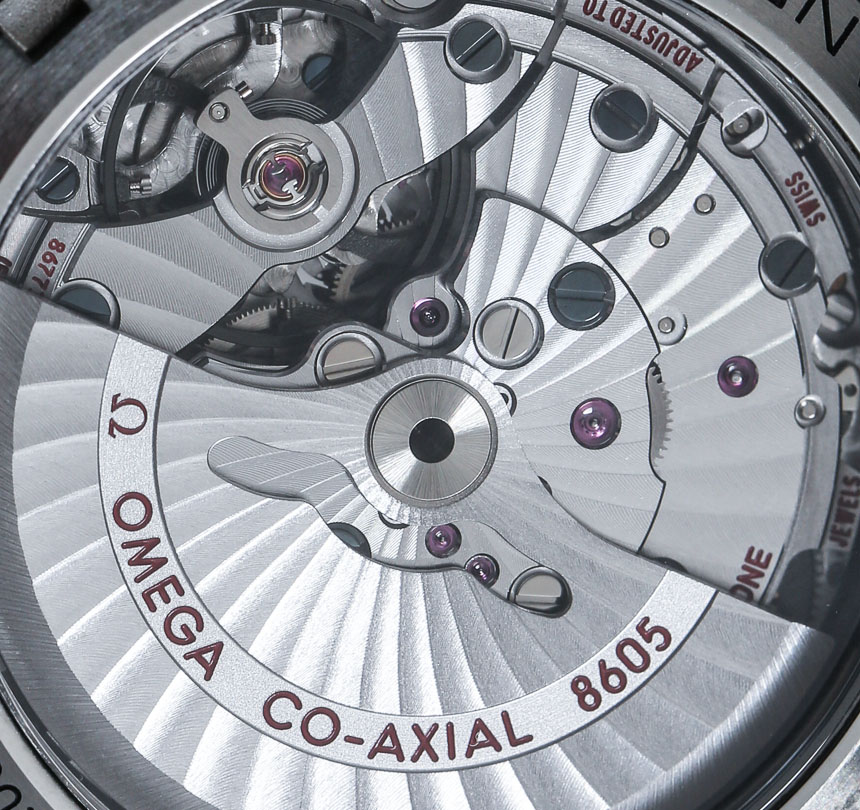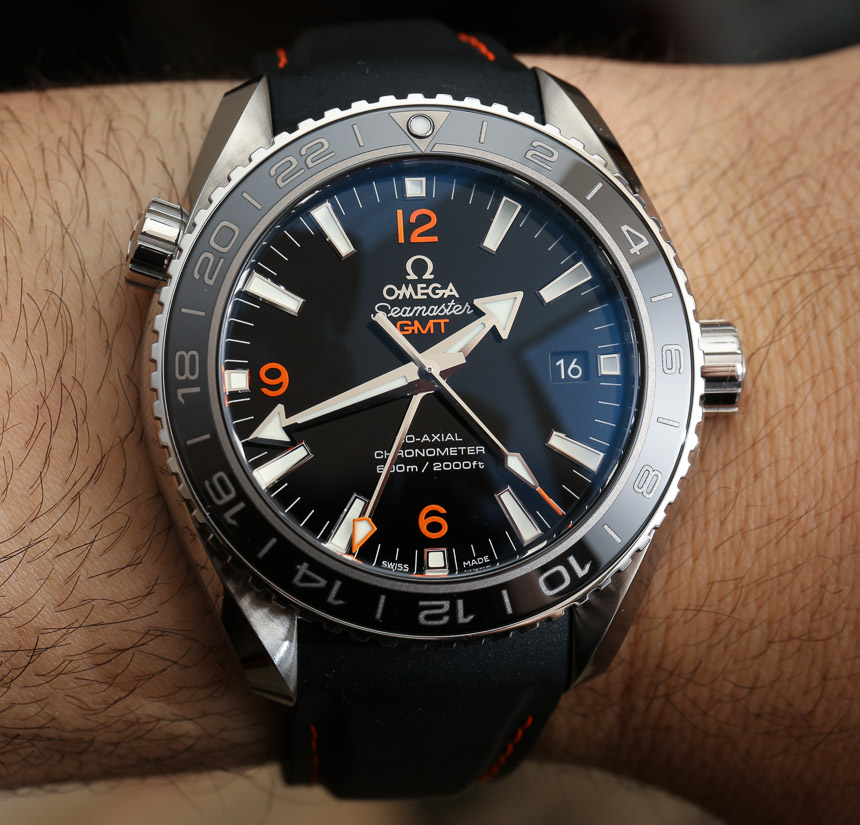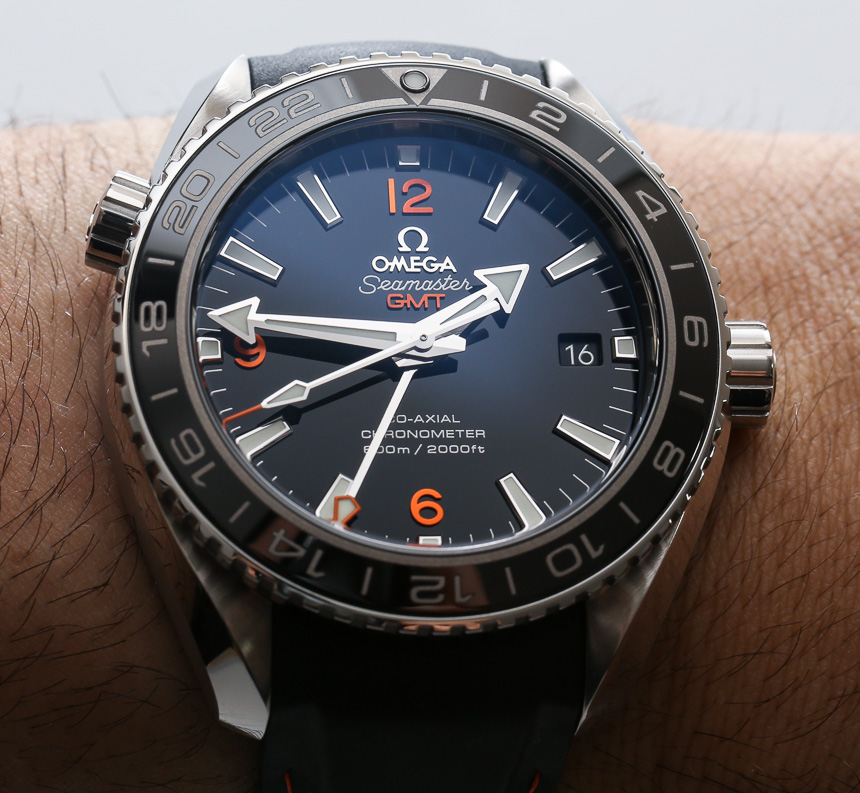

What’s more is that with the 600 meters of water resistance you also get a sapphire crystal exhibition caseback window allowing a view of the movement. That is actually quite rare to find on divers that can go this deep. I may have just unknowingly offered Omega’s precise rebuttal to the issue of case thickness without attempting to do so, but I felt the issue deserved some discussion as it is something people bring up.
The classic design of the Omega Seamaster Planet Ocean case never seems to look out of place or anything but handsome. The mostly brushed or satin-finished case has polished flanks made up of swoopy lines that help emphasize its shape. The lugs remind me a bit of big cat claws and it wouldn’t be an Omega Seamaster Planet Ocean without the helium release valve. The mostly vestigial nature of this latter feature has been well documented, but it nevertheless adds a sense of traditional style to the design in the same way that tachymeter scales do on many racing chronograph watches (like the Speedmaster).


While most Omega Seamaster Planet Ocean watches have unidirectional diver’s style bezels, the GMT has a 24 hour scale on the bezel and it turns in both directions. Normally I would say that this rotating offers a third time zone, but in this instance is best used as the scale for the 24 hour GMT hand. That is because unlike some other GMT watches, there is no independent fixed 24 hour scale on the dial. Yes, that does lessen the functionality of the Omega Seamaster Planet Ocean GMT just a little bit, but having said that I’ve never personally found it necessary to track a third time zone when traveling or at home so it was never an issue for me. You can still use the bezel as a timing bezel as well if you line it up to the minute hand as you would a traditional diver’s style bezel.
Dive watch bezels are a key discussion point these days so I am not done talking about the one on the Omega Seamaster Planet Ocean GMT. The outer bezel is steel, but with black ceramic and matte chromium nitride numerals/markers on the insert ring. A lume pip is further located at 12 o’clock. Scratch-resistant ceramic is used and in this case the markers and numerals and applied. This isn’t Omega’s more permanent Liquid Metal technology, that some Omega Seamaster Planet Ocean models have. As I understand it Omega is trying to roll out Liquid Metal more, but it is still technically challenging from a production standpoint.

